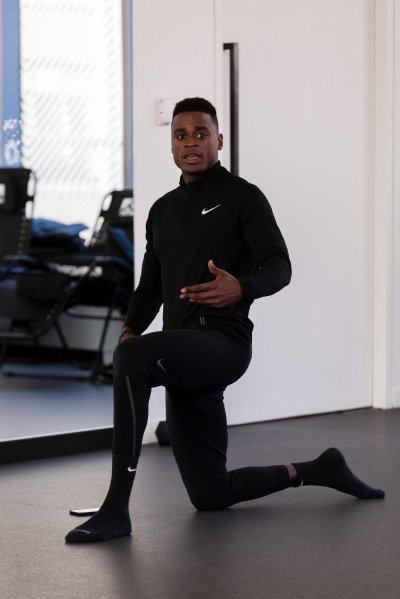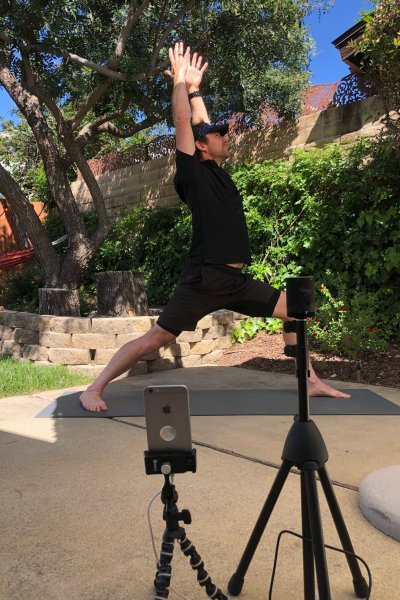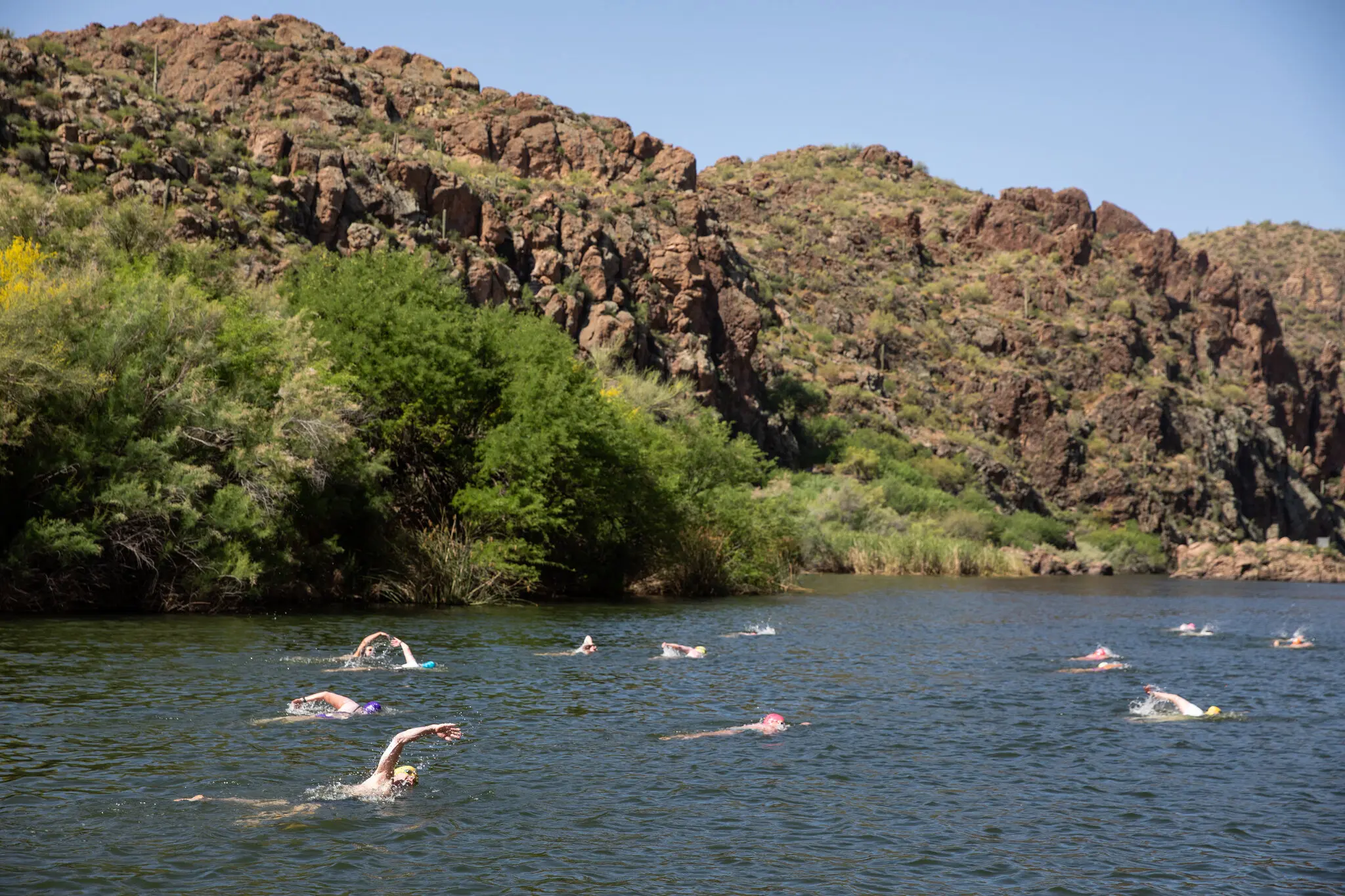Fitness Instructors Flock Online to Pump You Up


It was a little after noon on March 26, and Naomi Campbell was working out in her living room in New York City.
Disco music on blast, she crushed a set of squats, guided by her personal trainer, Joe Holder, who had tailored the 40-minute workout. As she started a grueling set of flutter kicks, Campbell stopped and glared at her trainer. “Oh my God,” she said. He couldn’t help but laugh.
Holder was not in the room, however. He was monitoring her on camera as she cycled through the circuit. Thousands of other people on Instagram Live were watching too — and participating — in what is normally a private workout between the supermodel and her trainer.
As America hunkers down during the coronavirus pandemic, free fitness workouts, many of them delightfully low-tech, are multiplying on social media platforms. They are being delivered by trainers and yogis and retired athletes. Holder calls these people the “player-coaches for the real world.”
While he and Campbell were doing their workout, two big-bearded trainers in Los Angeles were leading their clients through a similar session, as was an Olympic hopeful in the triple jump. An Ironman triathlete in Malibu led a flow yoga class. Those are just a few of the sessions available on social media each week.

Home workout posts on Instagram feeds and stories in the United States increased over fivefold on March 18 compared with a few days prior, a Facebook company spokeswoman said, which was around the time governors in some states began imploring people to stay home. (California was the first to order all residents to stay home, effective March 19.)
Facebook Live has thousands of options, as well. Nike has made its premium content free through mid-June, and Chris Hemsworth, the actor, recently made his Centr app free for six weeks, and as a result, views of workouts, articles and recipes have nearly quadrupled.
Even lesser-known trainers and studios are going live and finding an audience. Nic Knerr, 36, and Scott Forrester, 29, teach high-intensity interval training classes at Circuit Works in Santa Monica, Calif., where they’ve cultivated a devoted client base thanks to their James Harden beards, goofy humor and upbeat attitudes. That same flavor is now available, live, six days a week, on their new joint Instagram feed (@homewerkbnc). They are averaging 10 to 15 students per class.
Tilita Lutterloh (@iamtilita), 39, coaches a handful of students through group workouts from her living room in Leimert Park in Los Angeles. Lutterloh was hoping to qualify for the Olympics in the triple jump and makes her living as a fitness coach and nutritionist. With the Olympics postponed, she offers classes three times a week, attended by a half-dozen students. A triathlete, ultradistance runner and longtime yoga instructor, Ted McDonald (@teddymcdonald), 49, teaches dozens of yoga students on Instagram and Facebook Live.
Video fitness instruction is nothing new, but often what makes this current content so appealing are the low production values and an intimate feeling of being in the instructor’s living room or backyard.

The equipment can be just as DIY. On a recent morning, Knerr and Forrester had students doing triceps dips off the end of a chair. Lutterloh demonstrated toe taps on an ottoman, and Holder picked up a vase of flowers to demonstrate cross-body chops and presses to Campbell and her followers.
Although much of the content is free, most fitness trainers, the heart and soul of a nearly $100 billion global fitness industry, are self-employed and could face hard times with an extended stay-at-home period.
Gin Dietz, a personal trainer based in Silicon Valley, estimates that she has lost 80 percent of her income. Like Dietz, Pixie Acia (@purposefulpixie), a SoulCycle instructor in Southern California, is used to relying on multiple streams of income, but the pandemic has cut them off.
“In one second you go from crushing it,” Acia said, “to having all the rugs pulled from underneath you.”
It’s too soon to assess the impact on the industry, but ClassPass, an app that allows users to book classes at over 30,000 gyms and studios in 30 countries, lost 96 percent of its revenue in two weeks. Among the two dozen fitness and yoga instructors and gym and studio owners interviewed for this article, only three were well positioned to deal with an extended loss of income. (ClassPass is offering video classes on its app, too, by the way.)

“It’s definitely scary times,” Forrester said. He has a wedding to pay for this summer, if that’s not canceled, too.
Knerr signed up for unemployment immediately after the stay-at-home order was issued in Los Angeles County, though it won’t be enough to cover his rent. By the time Forrester attempted to sign up, California’s online unemployment enrollment system had crashed from intense demand. He eventually enrolled, and although his landlord has signaled a willingness to delay rent payments, he has student loans and credit card debt. “If this lasts a month, I feel we will be fine,” he said. “But if it lasts longer than that, it’s like, how do we survive?”

Yet despite, or perhaps because of, the challenges they face, fitness professionals are adapting. Many are using video social media for the first time to reach existing clients and a new audience, and some ask for donations at the beginning and end of the classes they offer.
“Just because everything is canceled doesn’t mean your life is canceled,” Lutterloh said. “It’s not about looking for the out, it’s about looking for what works.”
As Holder put it: “Moving the body and physical fitness get your blood flowing to help your lymph system, and that creates a beneficial response in your immune system. But you’re also disengaging from an anxious state, and that anxiety has a huge impact on mental health and your immune system.”
While Campbell, a celebrity for decades, has 8.7 million Instagram followers, Holder has 107,000. After playing football at the University of Pennsylvania, he worked for a nutrition start-up and moonlighted at a boutique gym training clients.
In 2015, he signed with Nike to become one of its master trainers who film workouts delivered to subscribers on the Nike Training Club app, but he never stopped training private clients. In 2017, Campbell became a regular. Given their travel schedules, the sessions are often held remotely.
On March 17, Campbell went live on her Instagram feed while she and Holder were working out on FaceTime. Since then, Holder estimated, more than 100,000 people have tuned in to their workouts. “It’s cool to see,” he said, adding that he would keep providing the workouts online for free.
Related articles
Contributor To
















Subscribe to my newsletter
Sign up for occasional updates on new stories, book releases, and behind-the-scenes writing insights - straight from Adam. No noise, just good writing.




